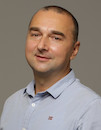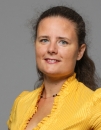Biomedical Signals and Systems
Lectures
Laboratory exercises
Seminar
Course Description
Study Programmes
University graduate
Learning Outcomes
- describe physiological systems in the human body
- distinguish main features of biomedical signals
- describe biomedical signal registration techniques
- compare biomedical signals registration and analysis methods for the particular problem solving
Forms of Teaching
Lectures are focused on theoretical and practical aspects of key course topics (two hours per week).
Seminars and workshopsStudents (in groups of up to three students) explore a topic or subject of interest related to the course.
Independent assignmentsStudents (in groups of up to three students) explore a topic or subject of interest related to the course.
LaboratoryStudents are obliged to take laboratory exercises (15 hours). During the laboratory exercises, students learn about biomedical signal measurement and analysis on practical examples.
Grading Method
| Continuous Assessment | Exam | |||||
|---|---|---|---|---|---|---|
| Type | Threshold | Percent of Grade | Threshold | Percent of Grade | ||
| Laboratory Exercises | 50 % | 10 % | 50 % | 10 % | ||
| Seminar/Project | 0 % | 10 % | 0 % | 10 % | ||
| Mid Term Exam: Written | 50 % | 20 % | 0 % | |||
| Final Exam: Written | 50 % | 20 % | ||||
| Final Exam: Oral | 40 % | |||||
| Exam: Written | 50 % | 40 % | ||||
| Exam: Oral | 40 % | |||||
Comment:
Continuous evaluation encompasses two written exams (midterm and final exam). Students who do not satisfy at continuous evaluation must undertake both the written and oral exam. Students are questioned at the laboratory exercises and they also collect the points for a practical project.
Week by Week Schedule
- The discipline of biomedical engineering, a historical perspectives.
- The human body as a system. Homeostasis. Body as a control system.
- Cell and cellular mechanisms. Sensory receptors.
- Nervous system. Information transmission. Muscular system. Electromyography.
- Reflex arc. Central nervous system. Electroencephalography. Electroretinography.
- EEG and evoked potentials recording.
- Vibration somatosensory evoked potentials. Sternberg auditory memory experiment and cognitive evoked potentials. Voluntary movement evoked potentials.
- Midterm exam
- Circulatory system. Heart function. Electrocardiography.
- Blood pressure. Blood pressure measurement methods.
- Phonocardiography. Vectorcardiography. Respiratory system.
- Medical imaging systems. X-ray. Fluoroscopy. Digital subtraction angiography. Computed tomography.
- Gama camera. Single-photon emission computed tomography. Positron emission tomography. Magnetic resonance imaging (MRI).
- Physiological Systems Modelling.
- Final exam


 Pristupačnost
Pristupačnost



